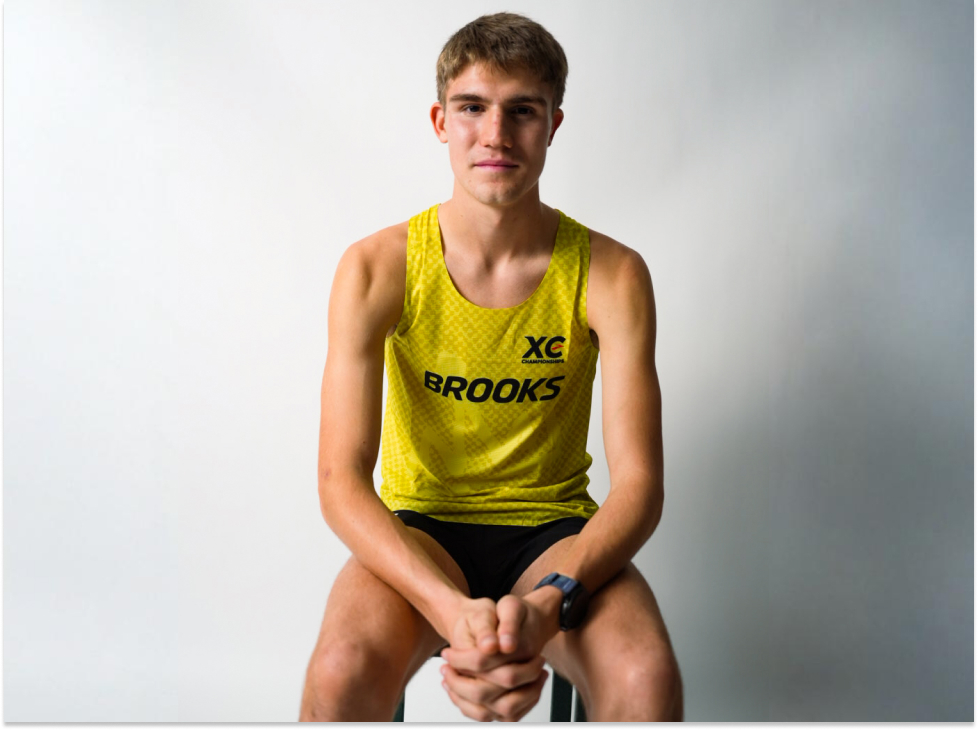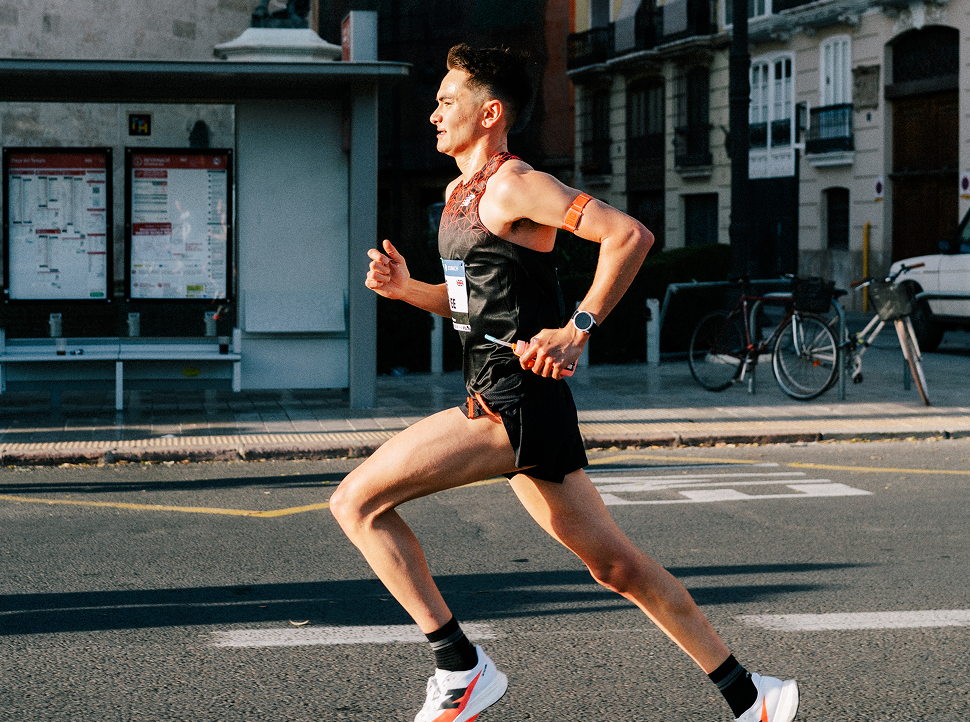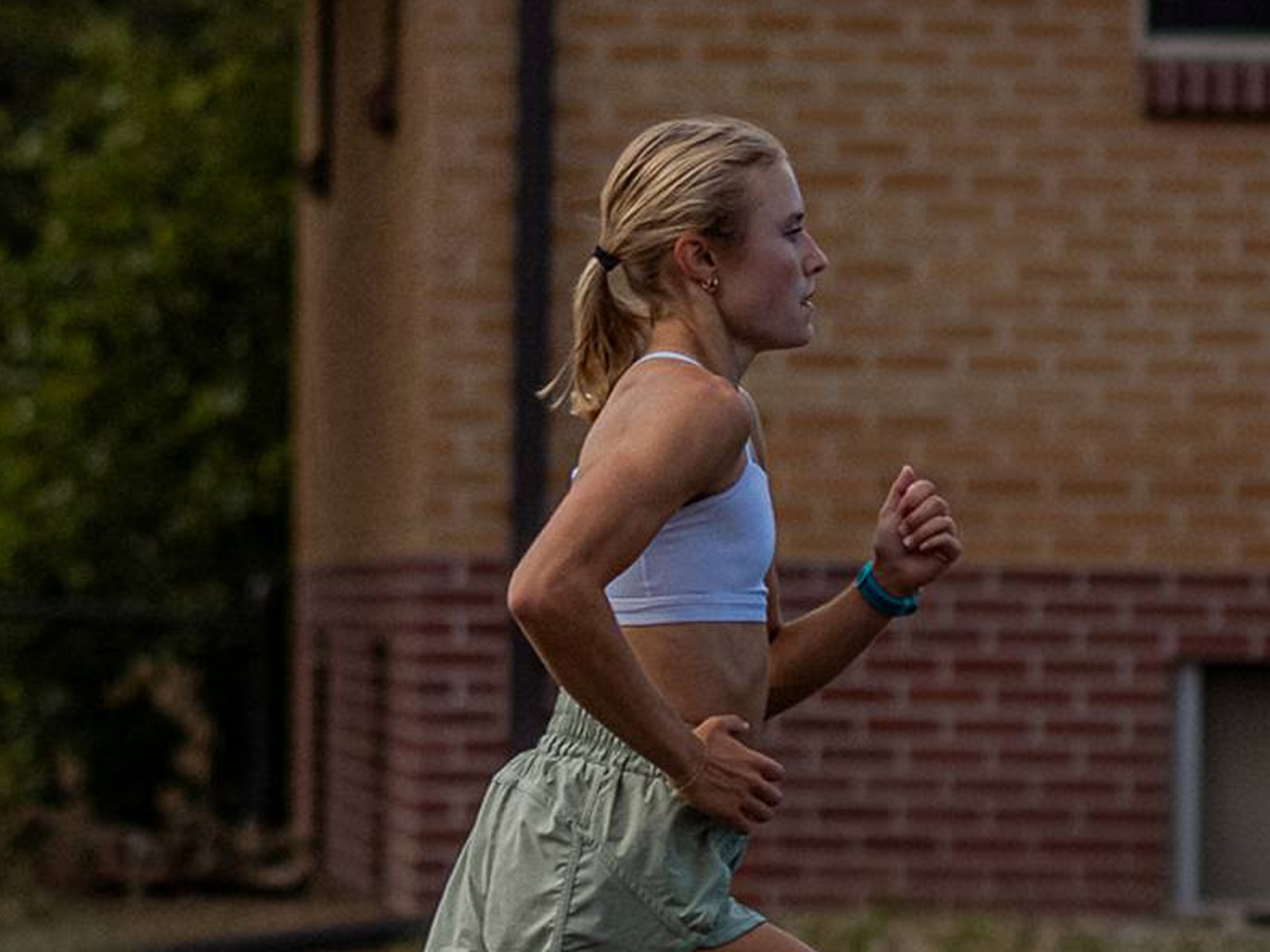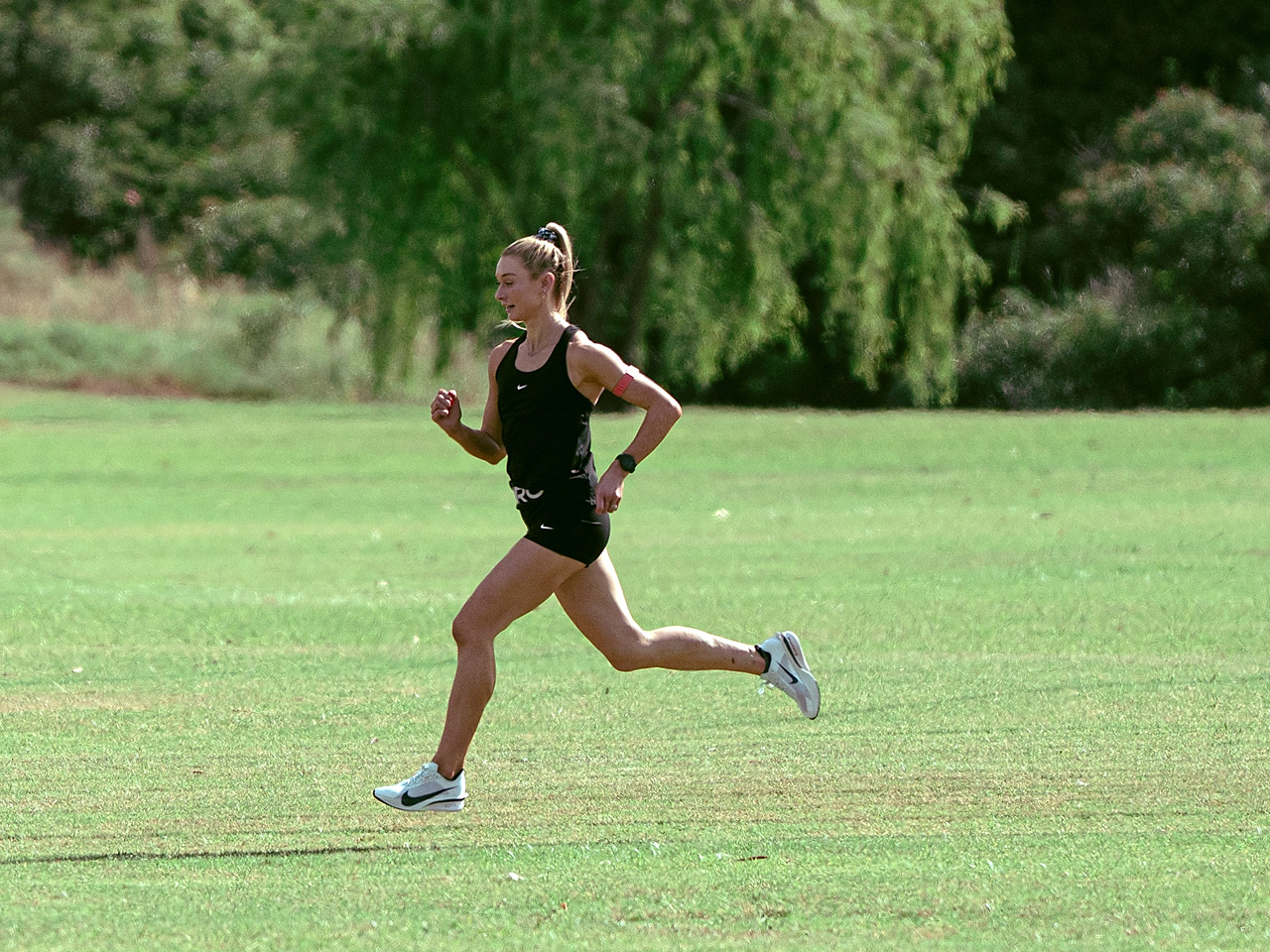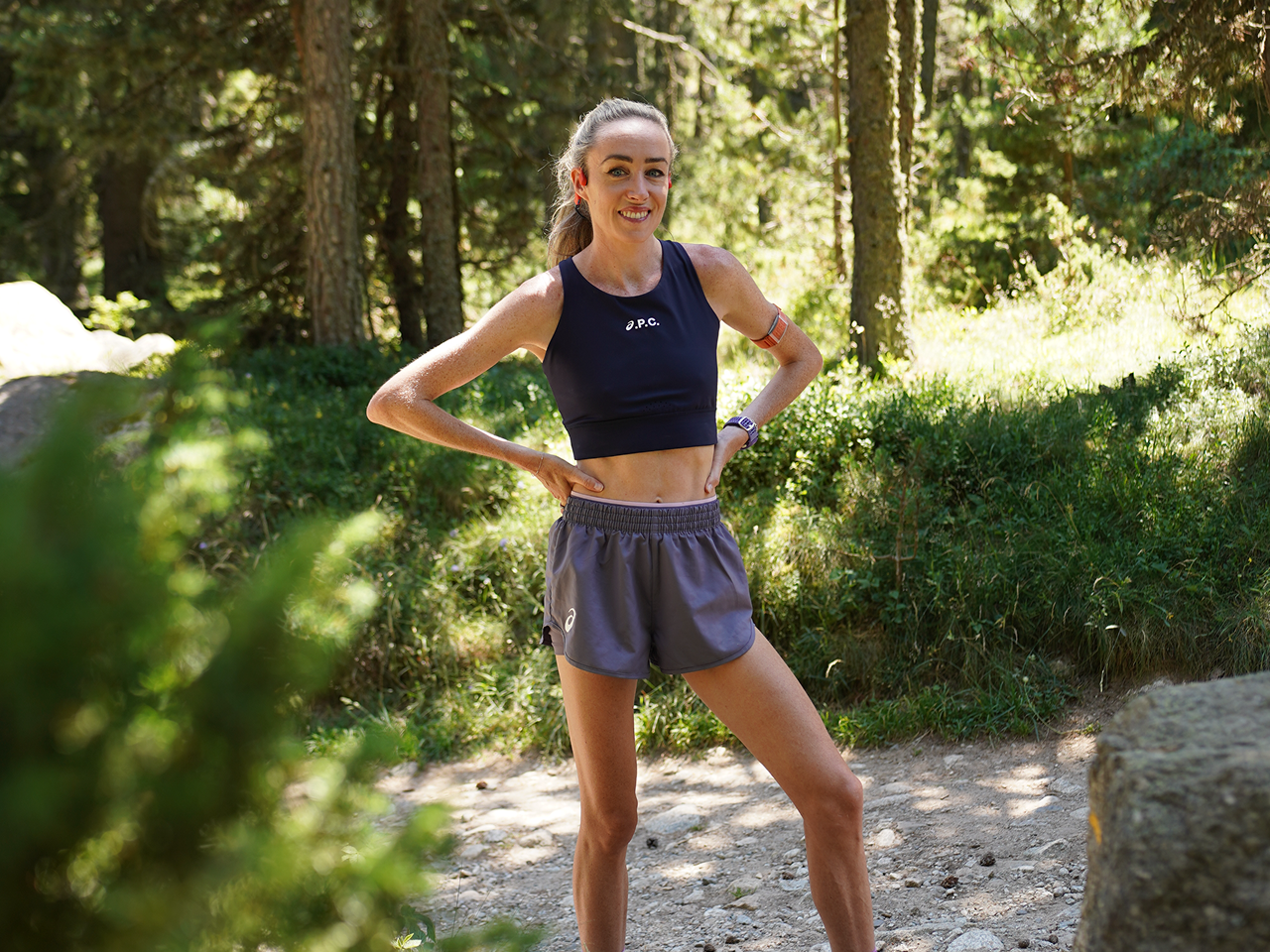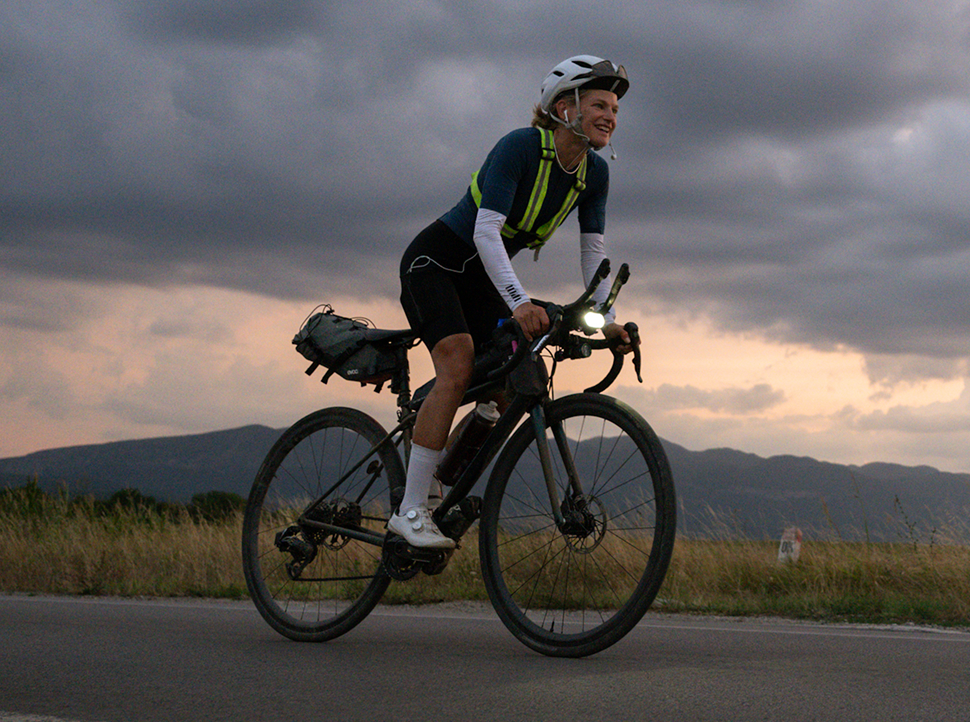Sasha DiGiulian is no stranger to the climbing community. As a three-time US National Champion, undefeated Pan American Champion (2004 to 2018), and 2011 Female Overall World Champion, Sasha continues to be an inspiration for all female athletes. Over the course of 2020-21, Sasha experienced multiple hip surgeries due to chronic hip displaysia. Despite these setbacks, Sasha has maintained a rigorous work ethic on her way to finding the best version of herself.
This year, Sasha decided to tackle a new challenge by competing in the 70.3 Panama Triathlon. With very little experience in endurance sports prior, Sasha learned some valuable lessons that she plans to take with her into her climbing season.
Gear used:COROS APEX 2 Take The Lead + COROS Heart Rate Monitor
A Deep Dive Outside Her Comfort Zone
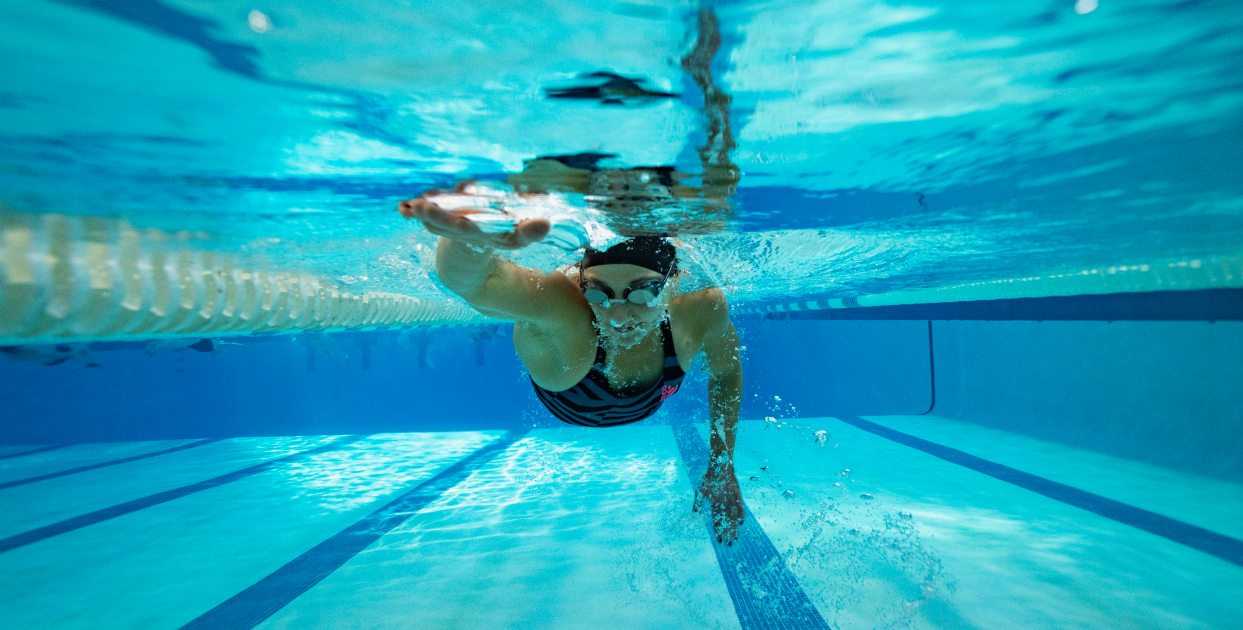
Sasha's swimming workout sessions.
What is a 70.3 Middle Distance Triathlon? This event is designed with 1.2mi of swimming, followed by 56mi of cycling, and 13.1mi of running.
After several years as a professional climber, Sasha decided to mix things up a bit by training for her first 70.3 with limited experience in the three disciplines.
The most challenging part of my training is to stay motivated in the gym because I'd rather try hard outside. I needed a different challenge to stay motivated this Winter and a triathlon seemed like the best option!
While Sasha has always been a competitive athlete, she dove into this new challenge with a different perspective compared to her exceptional results in climbing.
I am not aiming for time, but more as a personal challenge. With a history of past injuries, I simply want to train and progress safely this season.
Combining Triathlon & Climbing Workouts

Example of a triathlon training as seen from COROS Training Hub.
Triathlon training can be quite time consuming for a lot of athletes when structuring workouts for three disciplines at the same time. For Sasha, it became a real struggle to include endurance training on top of her normal climbing routine and meetings throughout the week. A typical training week, on top of her climbing workouts, would include 2-3 runs, 3-4 rides, and 1-2 swimming sessions, for a total of 900-1200 TL and 15-20 hours of training.
I enjoy swimming, but I am careful on runs to make sure I don't get injured. Cycling can be very hard to structure here in Boulder (Colorado) with the ever-changing weather we are having this Winter.

Sasha's Base Fitness during her triathlon build.
COROS Education. Base Fitness is your 42-day rolling average of Training Load. This metric is a great indicator of how much your body is ready to tackle harder workouts.
For 8 weeks, Sasha focused on increasing her Base Fitness to prepare her body for the different load it will have to endure on race day. She went from a Base Fitness score of 72 to 124 in roughly 7 weeks before tapering, an average increase of 7.4 per week, which is considered optimal before a race.
It's really tough to include both climbing and triathlon training into the schedule. I think I will be able to take a lot of mental aspects from triathlon into my climbing training as I am preparing a climbing project in Yosemite this season.
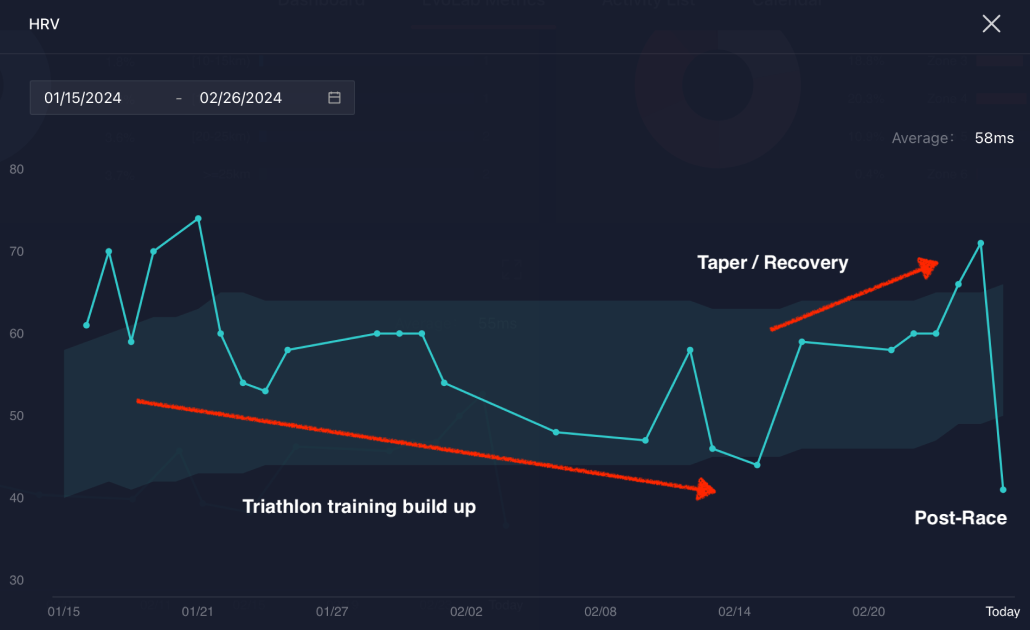
Sasha's HRV during her triathlon build.
COROS Education. HRV is a great fatigue metric and can be obtained when wearing your COROS watch during sleep.
While Sasha has been able to fully track her fitness with her COROS APEX 2, recovery is always an essential part of the training monitoring especially with her busy schedule. While wearing her watch during sleep, Sasha has been able to track her overnight HRV and plan her training accordingly. Although we can notice a slow increase (better recovered) during taper week, we can notice a significant drop the night after the race, highlighting just how impactful a 70.3 triathlon can be on your body.
Triathlon Tips From Sasha

After successfully completing her race, we asked Sasha to share her top 3 lessons learned as a first timer in this triathlon distance.
I wish I had put my sunglasses in my helmet; without the case. At the swim transition to bike, I had my sunglasses in a case and in the adrenaline of everything, I forgot them for the bike. Rookie mistake!
I targeted about 60g carbs/hour and drank electrolytes the whole time which worked well for me; I didn’t cramp and it was 90 degrees and very humid so the salt was important!
Dump the ice water from the aid stations on your head! That really helped with the heat!!
Follow Sasha via her website or social media to stay tuned for her next climbing projects this season!

/filters:quality(90)/fit-in/970x750/coros-web-faq/upload/images/215ac2c0c89bda9b39c67959849f9e28.png)
